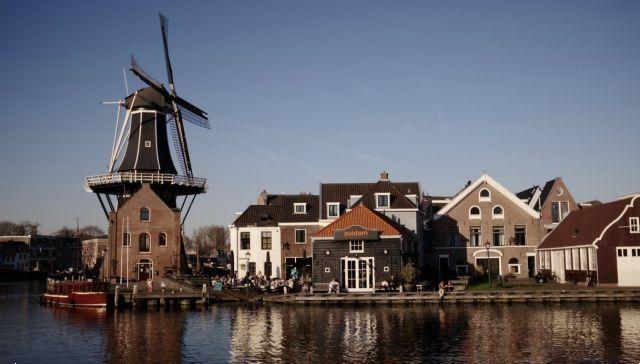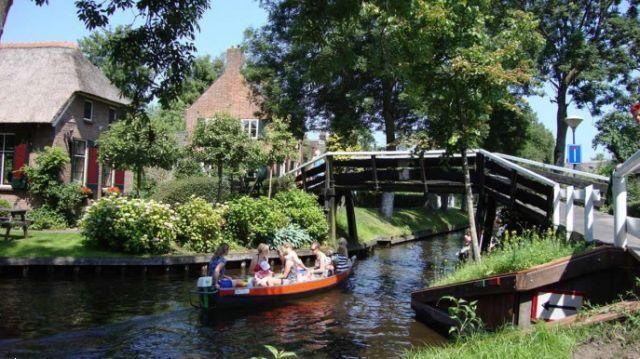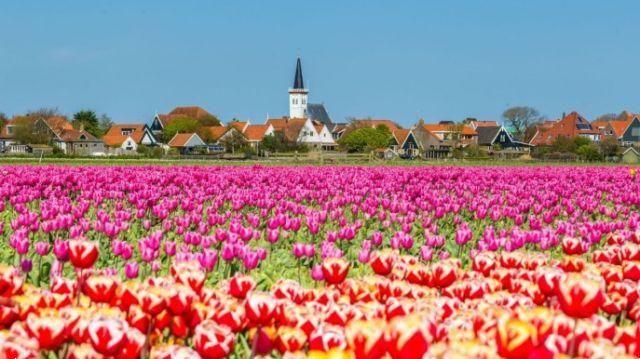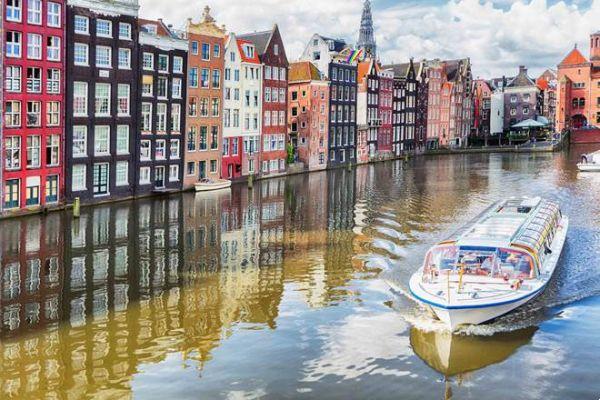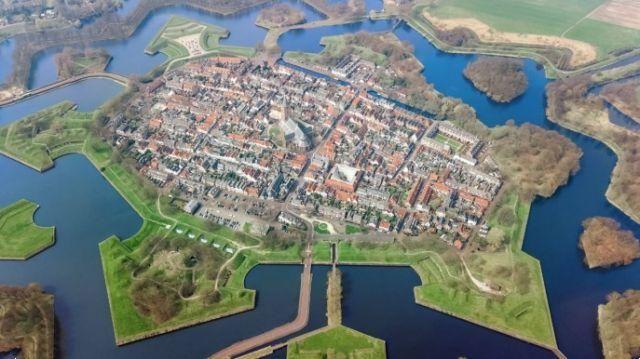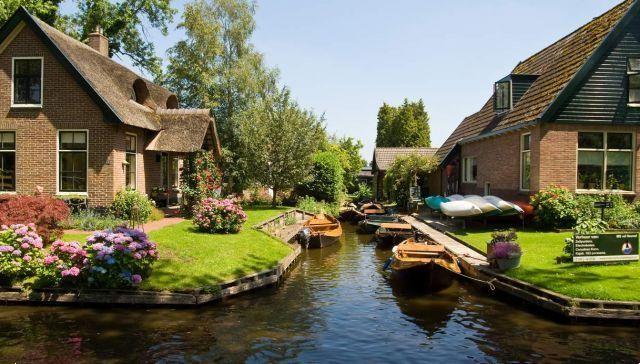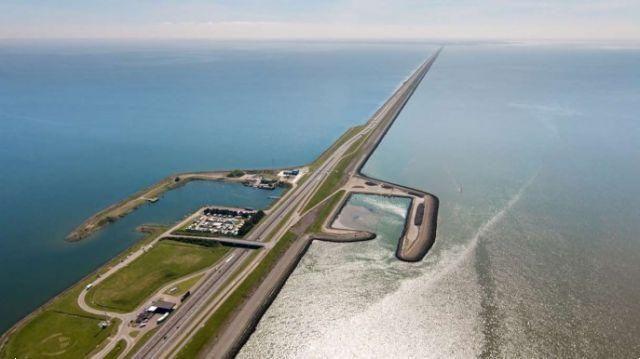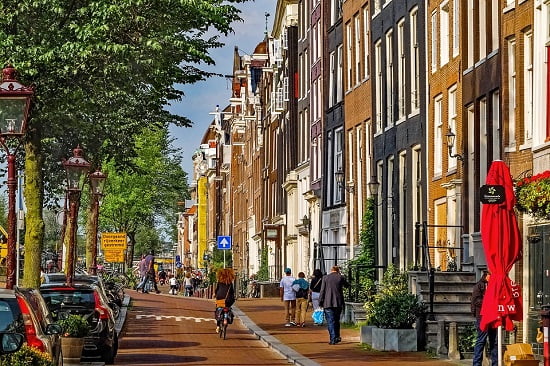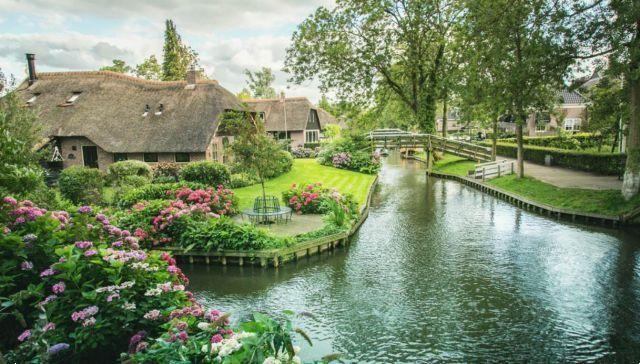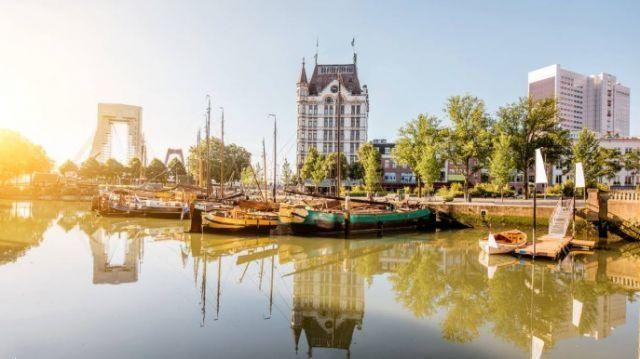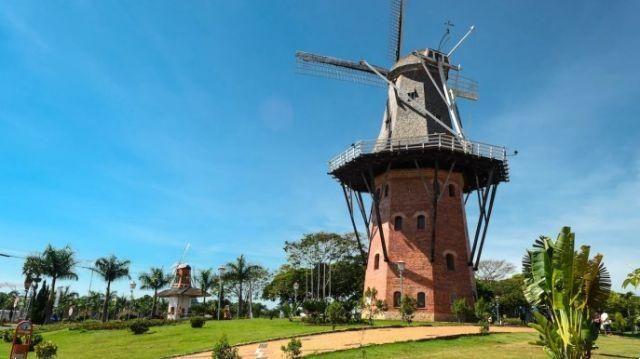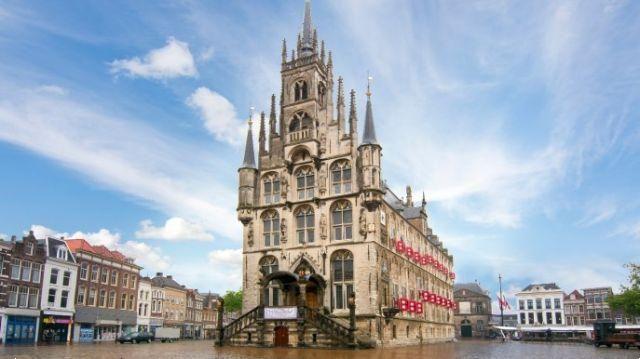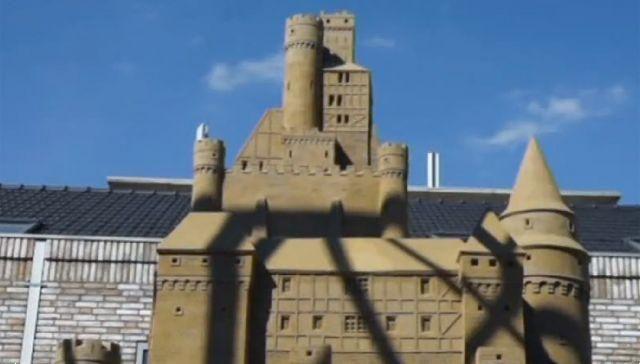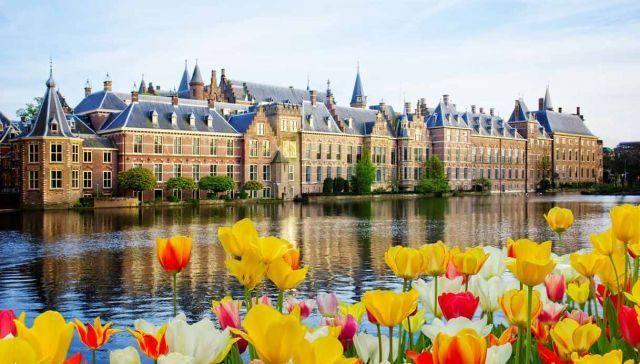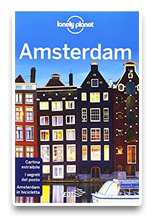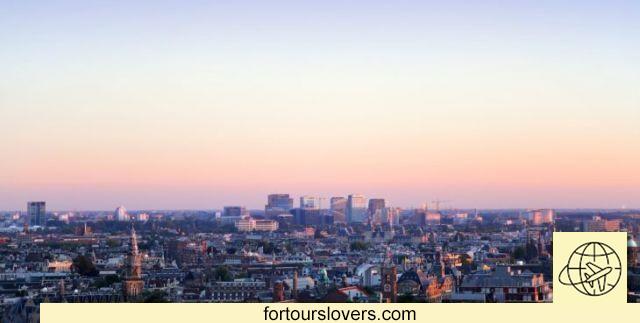
Amsterdam
11 things to do and see in Amsterdam and 4 not to doMultifaceted and tolerant. These are the adjectives that best explain thesoul of Amsterdam, a city capable of being at the same time ancient and modern, artistic and commercial, provincial and cosmopolitan. The secret, according to many, is there Protestant culture of merchants and sailors who, starting from the mid-500th century, and then throughout the following century, made the city very rich, making it the crossroads of all commercial traffic between the North Sea, the Indies and the Americas. Individual wealth, however, had, and makes sense, only if made available to the community. This is a characteristic that is somewhat the figure of the whole of Northern Europe, without prejudice to the specificities of each country. The city, as it is known, is spread over beyond 100 channels, crossed by 600 bridges that connect 90 islands. We mainly move in bicycle and with By public transport that for years have guaranteed a sustainable zero-emission mobility, from taxis to boats that sail along the canal belt. As for the reputation of a tolerant city, it is commonly traced back to the 70s of the last century when thousands of hippie and squatters they moved here from all over Europe. In fact, as we said earlier, Amsterdam has always been one multicultural city (just think of the large Jewish community present) but there is no doubt that the alternative wave we have mentioned has profoundly changed the way of life of its inhabitants. The soft drugs are legal (with very precise stakes), the prostitution is tolerated and there is one highly advanced civil rights legislation. However, these openings coexist with as many prohibitions which, especially in recent years, have become gradually more rigid, to protect public order and the quality of life. Life quality which is also very high for the presence of numerous museums (about 40 in a city that has less than a million inhabitants). For the list of recommended hotels click here. Here are our tips on what to do and see in Amsterdam. Happy reading.
1 Rijksmuseum
Rijksmuseum (National Museum) is the most important Dutch museum and is located in Museumplein (Museum Square), beautiful and well-kept square-park which also includes the Van Gogh Museum and Stedelijk Museum, Dutch museum of modern and contemporary art. The Rijksmuseum, on the other hand, houses the richest collection of so-called paintings "Golden Century", that '600 which saw the commercial and colonial expansion of the Netherlands. The most famous work of all is without doubt "The Night Watch" by Rembrandt (1606 - 1669) a painting that much criticism has taken as a watershed in the life of the Dutch artist marked by a youth of success and, on the contrary, an increasingly problematic maturity until the misery of recent years. In addition to Rembrandt, the museum exhibits several works by Jan Vermeer (1632 - 1675) including the very famous "Milkmaid" e "Woman in blue". It's not over, because there is also worth a visit museum library (Rijksmuseum Research Library) by far the most comprehensive public library on the history of art in the Netherlands. For more information on opening hours, prices and the works exhibited on the 4 floors of the structure (completely renovated a few years ago) visit the Official site: www.rijksmuseum.nl/it.
2 Van Gogh Museum
For many, the van Gogh Museum is reason enough to choose to visit Amsterdam. A museum born thanks to the availability of the heirs who donated to the city in 1963 over 200 paintings and 500 sketches made by the artist during the years of intense activity between Holland, Belgium and France. In 1973, ten years after the donation, the homonymous museum came to life which, in addition to some of the most famous works by Vincent van Gogh (just to mention a few, The Potato Eaters, The Sunflowers, The Wheat Field with Crows) also paintings of Monet, Gaugin, Tolouse-Lautrec and other contemporary artists of the genius of Zundert. The Van Gogh Museum has undergone several renovations and changes over the years. The last, in 2015, with the replacement of themain entrance, now directly accessible from Museumplein. For more information on opening hours, guided tours and prices visit the Official site: www.vangoghmuseum.nl (Spanish version available).
3 Stedelijk Museum
The Stedelijk Museum, the most important museum of modern and contemporary art Dutch, is located right next to the Van Gogh Museum and, like the latter, has undergone several renovations over time. The latest, in 2012 with the construction offuturistic modern pavilion whose façade was made with a particular synthetic material normally used in naval and air engineering. In the modern part of the museum temporary exhibitions are set up, while in the old building there is the permanent collection consisting of works by Manet, Mandrian, Appel, Chagall, Picasso and others. A collection that spans over a century of history - from 1850 to the present day - is that it is interesting to see to get a complete overview of Museumplein. For more information for timetables, prices and scheduled exhibitions visit the Official site: www.stedelijk.nl (English version available).
4 Vondelpark
despite the bourgeois origins (the area was designed in 1864 thanks to the generosity of a group of citizens, eager to give the people a green lung in the city center), Vondelpark rose to the media spotlight almost a hundred years later. In the 60s of the last century, in fact, the approx 45 hectares of the park were progressively occupied by thousands of hippies coming from every corner of Europe and, in many cases, also from overseas. As we mentioned at the beginning, the circumstance has profoundly changed the uses and customs of the city. The alternative wave has taken root, even if the public authorities have been able to reduce its most problematic aspects both from a social point of view and as regards public order. For example, around the mid-70s, the park was cleared and returned to full use by residents and tourists who, especially during the summer months, like to spend the hours of free time available here. There are areas equipped for children's play; There are bar-cafe where to consume something in company; There are three stages for the representation of outdoor shows; and finally there are thousands of parrots. Yes, you read that correctly. The trees of the Vondelpark are overrun with "Collared parakeets", an Asian species of parrot that is very popular as a pet. While creating various problems for the rest of the fauna, the animals have become a tourist attraction, especially in the evening when they give life to noisy concerts.
5 Canals of Amsterdam
The '600, the famous Golden Century of which we talked about the Rijksmuseum, it brought wealth and glory, but also poses new and costly challenges. One of these was thepopulation explosion which, in the space of a few decades, imposed a new order in Amsterdam. It is to cope with this emergency that the canal belt around the old town. The main ones are: the Singles (ancient medieval moat outside the walls); L'Men, Keizer and Prinzen. Around these 4 a very thick one has developed network of secondary channels (160 in all) connected by an equally dense network of bridges (600). An absolutely sui generis urban structure that theUNESCO international convention against doping in the sport in 2010 it included among the sites World Heritage Site. Many of the city's main attractions are located in the canal belt of Amsterdam, without forgetting, of course, that the motorboat tour of the canals it is itself a very popular attraction for tourists.
6 Leidseplein
After wandering around museums, parks and canals, he is indulging himself a few hours of break, otherwise what a holiday it would be! Leidseplein, the heart of Amsterdam's nightlife, is undoubtedly the right place. The square owes its name to Leidsepoort, giant city gate on the road from the city of Read, seat of the oldest Dutch university, led precisely to the capital. The door is no longer there, just as there are no longer the horses and carriages that stopped in the square until the XNUMXth century. In their place, outdoor cafe, breweries, coffeshop (there is one of the offices of “The Bulldog”, the first coffeshop in Amsterdam) e discotheques, including the very famous “Paradiso”, housed in a deconsecrated church. During the day, however, this square is the stage for many buskers that entertain the many tourists present. In conclusion, Leidseplein is a must on a visit to Amsterdam, despite the fame acquired in the last 30, 40 years it makes more than a few residents who prefer other places and situations turn up their noses. Just know it and not fossilize.
7 Anne Frank House
You can't say you've been to Amsterdam unless you visit the Anne Frank House. It is no coincidence that the numbers of the museum speak for themselves. Over one million visitors a year, mostly young people under 25 and from outside Europe. Figures that say two things: that the sad story of this girl, for over two years locked up behind a library, and finally deported to the Bergen Belsen concentration camp, after 70 years he still creates empathy; the other aspect, closely linked to the first, is that in order to fully grasp the tragic dimension of the story, it is necessary to go beyond the emotional data, trying to explain in more detail the historical context in which the facts matured. This second objective explains why the most famous house-museum in the world, No. 263 of Prinsengracht, both affected by renovations which as their purpose have precisely to renew the itinerary and the contents of the visit. In other words, the goal is to raise awareness among the younger generations onhorror of the Shoah so that there will never again be cases of mass deportation such as the one suffered by the young woman Annelies Marie Frank along with six million other Jews. Obviously the museum also includes the very famous diary written by the girl during the two years of forced exile. For more information: www.annefrank.org/nl (Spanish version available).
8 Westertoren
Westerkerk (lit. the "Western Church") is the largest Protestant church in Amsterdam. Designed in 1620 by the city architect Hendrick de Kaiser, was completed in 1632, several years after the death of "Il Vecchio" (as de Kaiser was nicknamed). It has a Renaissance facade, while inside it is rather sober, almost bare, except for the presence of the pipe organ. Here the great is buried Rembrandt even if no one knows exactly where. Some believe he is buried in an unspecified place along the northern perimeter of the church. Together with the artist, his partner Hendrickie Stoffels and perhaps his son Titus van Rijn. In addition to the presence of Rembrandt, the church is famous for his Bell tower. 85 meters high, the Westertoren it is often mentioned in the diary of Anne Frank who drew great consolation from the church bell for her condition as an exile. Reaching the top of the tower allows you to admire one of the most beautiful views of Amsterdam, even if the feat is not for everyone. Those with claustrophobia will do well to stay away. There is one outside the church memorial statue dedicated to Anne Frank and, not far from this, theHomonument, a memorial made up of three pink granite triangles in memory of gays and lesbians persecuted during the Nazis. For more information on the church visit the place: www.westerkerk.nl (Spanish version available).
9 Joordan
The other side of the Dutch Golden Age. This, even today, is the most authentic meaning of the Joordan, the Amsterdam's old working-class neighborhood which during the seventeenth century was populated by Flemings, Spaniards, Jews, Huguenots looking for work in the expanding city. Overcrowding and misery they were characteristic of the neighborhood until the early 900s. In truth, not the only ones, because the Joordan, like all the working-class districts that developed in Europe between the seventeenth and nineteenth centuries, was also teeming with ingenuity and creativity. It is no coincidence that the philosopher Cartes, the painter Rembrandt and the poet Vondel also lived there, to whom the homonymous park we mentioned earlier is entitled. In short, a proletarian neighborhood that still bears the traces of the social struggles committed by its inhabitants. Near the Noorderkerk, a Protestant church in the neighborhood, there is a statue commemorating the events of 1934, when workers took to the streets against the halving of unemployment benefits and the protest was bloody repressed by the police. If this is the story, the present instead says that the Joordan is a residential neighborhood with pretty townhouses e small bridges. Its rebirth began in the 80s of the last century when the city administration gave way to the redevelopment of the area, encouraging artists and creatives to move there. A real bargain, considering that in the space of a few years the real estate value has shot up, transforming the houses, cafes, galleries and shops that insist in the area into highly coveted assets. To be seen.
10 Dam Square
We talked about the importance of Leidseplein and Joordan but the heart of Amsterdam is undoubtedly Dam Square. It is here, in fact, that some of the main tourist attractions such as the Royal Palace (Koninklijk Paleis) and New Church (Niewe Kerke) which, despite the name, actually dates back to the XNUMXth century. At the center of the square, then, there is the Nationaal Monument (or Nationaal Monument op de Dam), a 22 meter high obelisk in memory of the victims of the Second World War. Sculpture in the 60s of the last century became one of the favorite meeting places for hippies who increasingly flocked to the city from all over Europe and even overseas. At a certain point, however, it was necessary to take measures to avoid the bivouac, thus returning the square to the free use of residents and tourists. Tourists who can use Dam Square like landmark to move to any other part of the city even if, it must be said, its centrality over the years has determined a tariff increase of accommodation facilities present. From Dam Square you can reach the Red light district, as well as the Begijnhof, a very famous city attraction.
11 Begijnhof
At the beginning we referred to the versatility of Amsterdam, a city rich in history, museums and monuments that in the last 30, 40 years, however, has become something of a homeland of transgression. A drift, the latter, that the city administration has always tried to tame: on the one hand by supporting it; on the other hand, trying to contain the risks to public order as much as possible. The simultaneous presence of different types of visitors (with the infinite combinations of the case) often, however, causes the city center to be overcrowded. Chaotic. In any case, do not worry. Who wants a little bit of quiet e Relax has a convenient and easily accessible alternative. We are talking about Begijnhof, an old convent of Catholic lay nuns (Beguines) dedicated to the assistance of the poor and needy. Even today, which is a simple park inhabited mainly by students and the elderly, Begijnhof has miraculously preserved its aura of contemplation and peace. So if at some point during your trip to Amsterdam you suddenly feel the need to recharge your plug, the park's tree-lined courtyard is the place to be. right place for a relaxing stop. For more information on how to reach the place, opening hours and everything else click here (info only in Dutch).
1 Don't take pictures in the Red Light District
The transgressive spirit of Amsterdam works because it is based on a series of strict prohibitions. One of them is do not photograph the "women in the window" who prostitute themselves inside De Wallen (or De Walletjes), the infamous red light district. Breaking the rule is expensive. So much better to abstain.
2 Don't buy drugs on the street
What is legal in the city is only the consumption of marijuana and hashish. Ecstasy, cocaine, heroin and the like are strictly prohibited. Therefore, absolutely must be wary of drug dealers, even when they propose to compete with coffee shops on the soft drug market.
3 Do not interfere with cycle paths
The favorite means of transport for the inhabitants of Amsterdam are bicycles. Therefore the cycle paths are off limits for pedestrians. In addition to a more than likely fine (or, even worse, an accident) the obstruction of the lanes could cost you a very tough lecture. The Dutch, in fact, do not compromise on the circumstance and in truth even driving the cars are (for heaven's sake, not all) quite impatient towards pedestrians. Therefore, it is better to be vigilant and respectful of others' beliefs.
4 No smoking and drinking on the street
In Amsterdam you cannot smoke on the street. In public places, such as the station, there are areas reserved for smokers but otherwise smoking outdoors is strictly forbidden. Ditto the alcohol. Consumption is allowed in bars and clubs, but not on the street. In short, as we have stressed several times, the proverbial tolerance of Amsterdam is based on a series of precise rules. Respecting them is essential for the success of the holiday.




